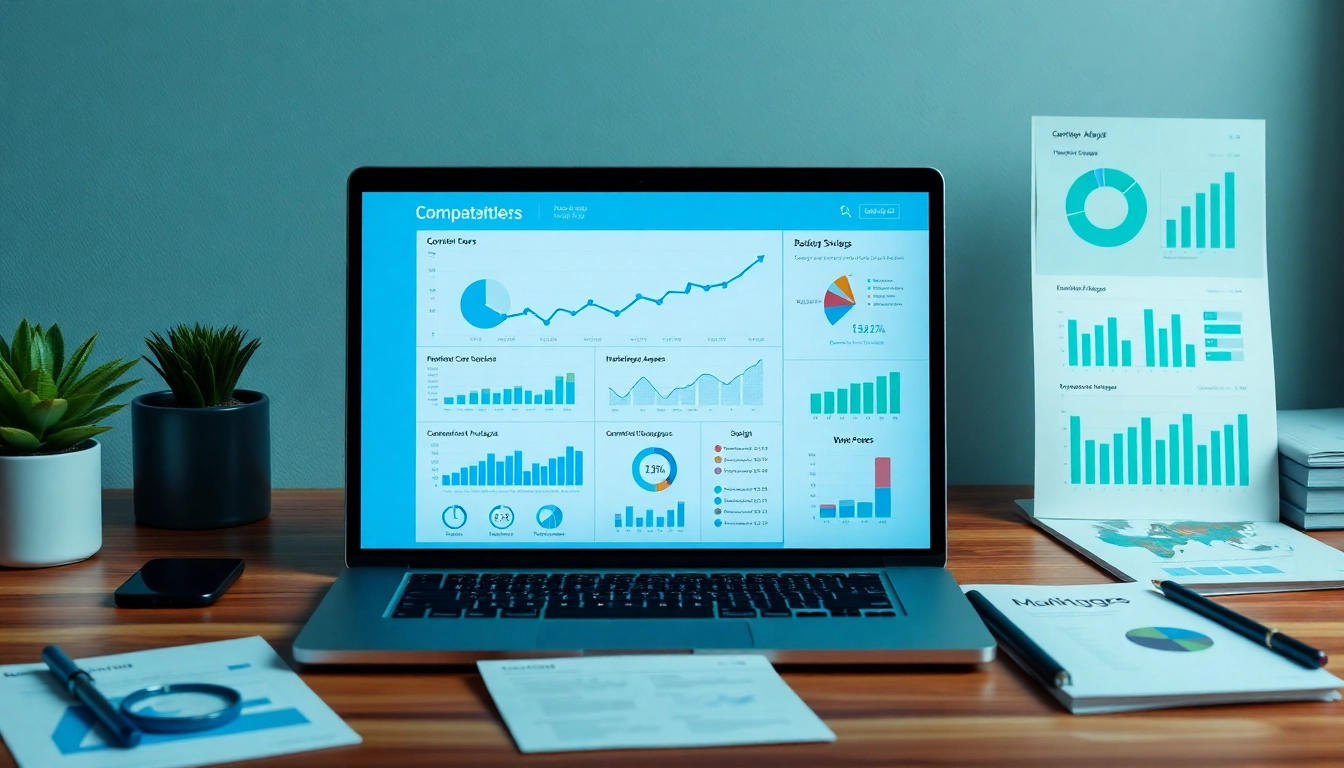Understanding AI Prompts for Competitor Analysis
In today’s data-driven business environment, understanding competitors is essential for developing effective strategies. Leveraging ai prompts for competitor analysis can transform the way businesses gain insights by automating the data collection and analysis process. This article delves into how AI prompts streamline competitor analysis, explore the types of prompts that can be utilized, best practices for crafting effective prompts, common challenges faced, and methods for measuring the impact of these strategies.
Defining AI Prompts in Competitive Research
AI prompts are specific queries or commands given to AI models, like ChatGPT, that guide the model in generating relevant responses. In the context of competitive analysis, these prompts are tailored to extract insights related to competitor activity, market positioning, strengths, weaknesses, and consumer perception. By honing in on particular areas of interest, companies can receive detailed information that assists in strategic planning and decision-making.
Importance of Competitor Analysis
Competitor analysis is crucial in identifying market trends, understanding industry standards, and benchmarking performance against key players. This analysis helps businesses highlight gaps in their offerings, position their products better, and formulate effective marketing strategies. Moreover, understanding competitor strategies can lead to innovation and improved customer satisfaction, thereby enhancing competitive advantage in the market.
How AI Enhances Analysis Efficiency
Artificial intelligence can significantly enhance the efficiency of competitor analysis by processing vast amounts of data quickly and accurately. It reduces the need for manual data collection, allowing teams to focus on interpreting insights and devising strategies. AI prompts can facilitate real-time data retrieval, trend analysis, and even predictive modeling, making the competitive landscape easier to navigate.
Types of AI Prompts to Use in Analysis
Prompts for Identifying Competitors
The first step in any competitive analysis is identifying who the key competitors are in the market. AI prompts can help by asking questions such as:
- “Who are the top competitors in [specific industry]?”
- “List emerging competitors in [specified market].”
- “What differentiates [specific competitor] from its competitors?”
By focusing on these prompts, businesses can develop a comprehensive list of competitors, including those who may not be immediately apparent, such as new entrants in the market.
Prompts for Analyzing Market Position
Once competitors are identified, it’s essential to assess their market position. AI prompts designed for this purpose can include:
- “Analyze the market share of [competitor].”
- “What are the key marketing strategies used by [specific competitor]?”
- “How does [competitor]’s pricing compare to ours?”
These prompts enable a deeper understanding of where competitors stand in the market and how they strategize to maintain or grow their position.
Prompts for Evaluating Product Features
A critical aspect of competitor analysis is reviewing and comparing product offerings. Utilizing AI prompts effectively can provide insights such as:
- “What are the main features of [competitor]’s product?”
- “Compare customer reviews of [your product] and [competitor’s product].”
These prompts assist in evaluating strengths and weaknesses related to product features, ultimately guiding adjustments or improvements for internal products.
Best Practices for Crafting Effective AI Prompts
Clarity and Focus in Prompting
Effective prompts are clear and focused. When crafting prompts, it’s important to avoid ambiguity. For example, instead of asking, “Tell me about competitor analysis,” a more effective prompt would be, “What are the strengths and weaknesses of [specific competitor] in the [specific category]?” By using precise language, the AI can generate targeted insights that are more actionable.
Iterating for Better Insights
Iterating prompts based on the responses received can lead to more insightful analysis. If a first attempt yields general insights, consider refining your questions to dig deeper. For example, if you ask, “What are the marketing strategies of [competitor]?” and receive broad responses, a follow-up prompt might be, “How has [competitor] used social media in their marketing strategy?” This back-and-forth can refine your understanding significantly.
Balancing Specificity and Creativity
Effective prompts strike a balance between being specific and allowing room for creativity. While it is essential to ask concrete questions, leaving some prompts open-ended can encourage the AI to provide innovative insights. For example, instead of just asking for facts, you might prompt, “What unique value proposition does [competitor] offer that resonates with customers?” This can uncover insights beyond quantifiable data.
Common Challenges in AI-Driven Analysis
Data Overload and Misinterpretation
One of the primary challenges in using AI for competitor analysis is data overload. With a vast amount of information processed, it can become overwhelming to distill useful insights. To mitigate this, focus on thematic analysis—seeking relevant data points tied directly to strategic goals. Aligning the prompts to specific objectives will help in filtering out unnecessary information while focusing on actionable insights.
Keeping Up with Industry Changes
The business landscape is constantly evolving. Competitor strategies and market trends shift frequently, requiring continuous updates in analysis. AI can help automate aspects of this monitoring through regular prompt iterations or alerts for significant industry changes. Establish regular review intervals for analysis outputs to ensure strategies remain aligned with market realities.
Ensuring Relevant Context
AI often relies heavily on the input provided to produce meaningful insights. Without a clear context, responses can be misaligned with strategic needs. When formulating prompts, always begin with relevant information, such as the nature of the analysis, market conditions, or consumer demographics. This context shapes the AI’s output, ensuring it provides insights that are both relevant and actionable.
Measuring the Impact of AI Prompts on Analysis Outcomes
Key Metrics for Success Evaluation
Establishing metrics to evaluate the effectiveness of prompts is vital. Key performance indicators (KPIs) can include:
- The accuracy of insights derived from AI outputs
- The time saved in analysis compared to traditional methods
- Changes in strategic outcomes directly linked to insights gained
By analyzing these metrics, businesses can evaluate the ROI of AI-driven competitor analysis and refine techniques accordingly.
Adjusting Strategies Based on Findings
Insights gleaned from analysis should inform strategic shifts. It is critical to outline action plans based on findings, such as revising product features, altering marketing tactics, or improving customer engagement strategies. Regularly revisit previous analyses and compare them against current data to identify trends and patterns over time.
Case Studies of Successful Implementations
Numerous companies have successfully implemented AI-driven competitor analysis to achieve remarkable results. For instance, a leading e-commerce platform used AI prompts to analyze competitor pricing strategies, leading to a 20% increase in conversion rates after adapting their pricing models based on insights gained. Similarly, a tech startup leveraged AI to gain insights into industry trends that informed product development, resulting in a successfully launched product that filled a previously identified market gap.



